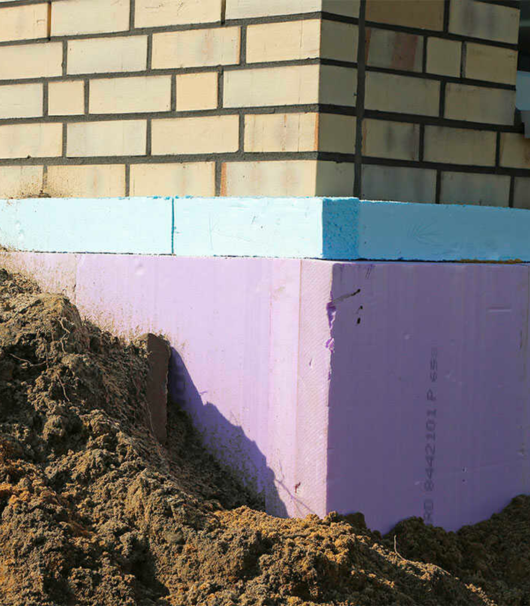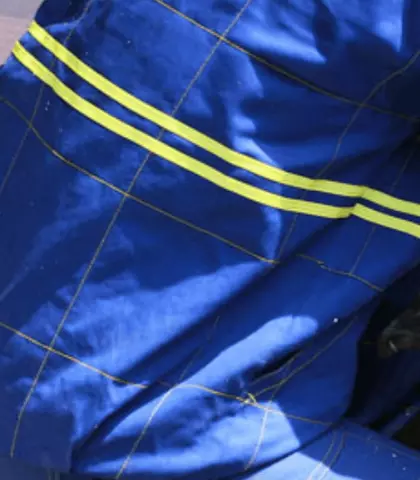Useful links
➜ Installation guides
➜ References
➜ Facade Insulation Systems catalogue
➜ FAQs
➜ Technical glossary
The foundations, basement and plinth are among the places where a considerable amount of heat can escape. Moreover, these are very stressed and exposed parts of the building. They have to withstand a wide range of influences such as moisture, rainwater, frost and soil pressure.
Therefore, it is necessary to choose a material for insulation that, in addition to thermal insulation, also has high resistance to moisture, frost, aggressive soil components and high compressive strength.
Our solution: Isover EPS Sokl 3000
Foamed polystyrene boards with minimum water absorption, high compressive strength, frost resistant. Isover EPS Sokl 3000 is manufactured by moulding rather than cutting (the latter being the case with classic foamed polystyrene). This gives the boards exceptional properties.
Advantages
● Very low water absorption
● Frost resistance
● Thicknesses up to 300 mm
● Waffle surface structure for high glue and cement adhesion strength
● Excellent thermal insulation properties
● Excellent mechanical properties
● Minimum weight
● Easy workability
● Long service life
● Environmental-friendly and safe for health
● Biological neutrality
● Economical

Composition


Plinth insulation

The plinth is where the perimeter walls connect to the ground. The plinth is affected by rainwater, frost, snow as well as mechanical effects, such as pedestrian and road traffic. Heat insulation is required for two main reasons: to prevent frost from penetrating through foundations and to prevent the generation of mildew in corners.
The insulation is glued onto the plinth as deep as the non-freezing depth (80 cm below ground level approximately). Properly made insulation resists mechanical damage as well as the water that accumulates at the plinth after rain or from melted snow.
Basement and foundation slab insulation

Thermal insulation of the foundation slab is essential to prevent heat loss. And if you plan to use the basement year-round (for example, as a gym or garage), it is worth insulating the basement walls as well.
In such a case, the insulation should be installed deeper than the non-freezing level. It must be able to withstand not only moisture but also the soil pressure. The greater the depth of the underground wall, the stronger insulation is required.
How much will insulation cost you?
Ask for a free estimate.
Our engineering specialists will be happy to assist you in choosing the right material, calculate the required quantity as well as tentative price and tell you where to find the nearest vendor.
This service is completely free of charge.
[email protected]
+420 226 292 221
I want advice
Basement insulation not only for thermal comfort
The requirements for the insulation of the plinth and the lower part of the house differ from above-ground insulation. In addition to the requirement for sufficient thermal properties, strength, resistance to water, frost, aggressive soil components and the possibility of cleaning are also taken into account.
An ideal insulation system will provide your home with the following benefits:
● Prevents freezing of foundations and part of the terrain under the house.
● Reduces heat loss.
● Prevents moisture condensation and its transport between foundations and masonry.
● Extends the life of the masonry and the lower parts of the building.
● Enables seamless continuity of the underground and above-ground insulation system.
Insulation of the basement
The lower part of the house is the place where the insulation is subjected to a lot of pressure from the structure and the surrounding soil together with water. Therefore, a necessary property of such insulation is even higher mechanical resistance and non-absorption. It is normally insulated below the frost-free depth and it is true that the greater the depth of the underground wall, the stronger insulation is needed.
Get a how-to guidance for your building project FREE OF CHARGE
Subscribe to our newsletter and download an e-book full of mounting instructions and tips that will guide you throughout your heat insulation project step by step.



